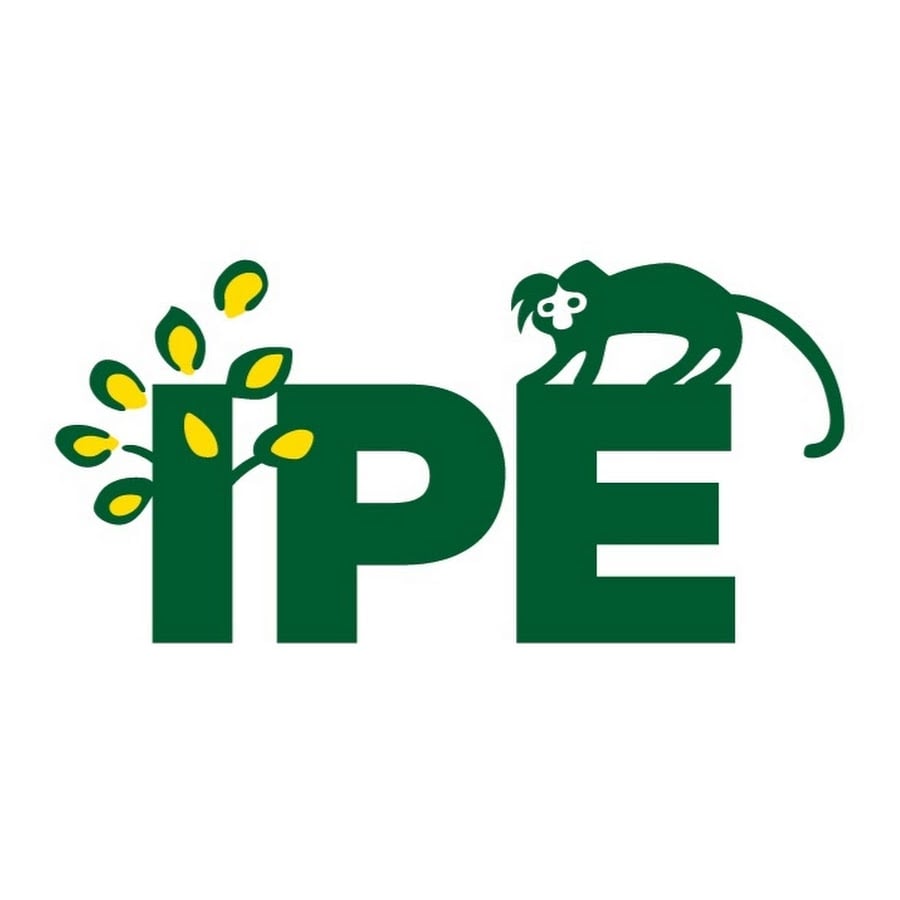::cck::1108::/cck::
::introtext::
WHAT WE WANT AND HOW WE ACT
We establish strategic objectives that reflect the transformations we intend to generate, related to the organization’s mission. Here, some results that we have already achieved over the years of work, according to each objective.
1. Conserve Biodiversity
- Sustainable businesses implemented or strengthened: 09 community nurseries in Pontal do Paranapanema; 1 native tree nursery in Nazaré Paulista.
- Consolidated businesses: 51 families producing sustainable agroforestry coffee in Pontal do Paranapanema.
- Scientific research, studies, community mobilizations and projects support the construction of socio-environmental improvements also through public policies. With data on the black lion tamarin and the Pontal do Paranapanema landscape, we helped to implement, for example, the Mico-Leão-Preto Ecological Station (Pontal do Paranapanema-SP), a protected area of great importance for the conservation of Atlantic Forest landscapes of São Paulo.
- Information from scientific research on fauna, with black lion tamarin, Brazilian tapir, Amazonian manatee, jaguar, giant armadillo, anteater, etc., have already been used for the development of National Action Plans for Conservation of Endangered Species (PAN) – public policy instruments that aim to identify, every five years, the threats and pressures to which fauna and natural environments are subjected. They are also used in assessments of the conservation status of species (world red list of the International Union for Conservation of Nature and IBAMA/Brazil). We also participate in ungulate, feline and primate evaluation committees.
Some examples of how this happens:
– Our data helped in the official recognition by the Government of São Paulo, of the black lion tamarin as a symbol species of the State, helping its protection;
– Data of trampling and deaths of tapirs and human beings on the roads, in Mato Grosso do Sul, have already supported discussions for the responsibilities of road companies.
– Information on the behavior of the Amazonian manatee helped to establish the management plan for the Anavilhanas National Park (2017).
- We have already carried out more than 20 management plans for PAs and feasibility studies that even supported the creation of the Itaberaba and Itapetininga parks, in the Serra da Cantareira region (SP). Also in the region, we participated in the construction of the Management Plan for Environmental Protection Areas (APAs) Cantareira System and Bairro da Usina.
- In Nazaré Paulista (SP), Atlantic Forest region, we contributed to the establishment of CONDEMA (Community Council for the Defense of the Environment), resumed in 2020, of which we are a part and where we also include the agriculture group as a representative member of rural workers .
- In the Amazon, our research and participation together with several local actors were important in the creation of the Lower Rio Negro Mosaic (2010), a set of protected areas that promote services, products and knowledge of the region. The Mosaic covers 7.5 million hectares, home to 1.8 million people and 80 indigenous and riverside communities.
- IPÊ’s action was also very important with the community for the category readjustment of the Baixo Rio Negro State Park, transforming it into a Puranga Conquista Sustainable Development Reserve (2014).
2. Guide for Biodiversity Conservation in Brazil
- Support in the creation of public policies and the influence of the environmental agenda on the agendas of various sectors, providing information from our research with fauna, including species such as the black lion tamarin, Brazilian tapir, Amazonian manatee, jaguar and giant armadillo, for the development of National Action Plans for the Conservation of Endangered Species (PAN).
IPÊ and education:
- Education is in IPÊ’s DNA. Just four years after its foundation, IPÊ created the CBBC – Brazilian Center for Conservation Biology (1996). IPÊ is one of the pioneers in the field of Conservation Biology and helped to consolidate this science in Brazil. The Center grew and, in 2011, became ESCAS, housing all IPÊ courses: Professional Master’s, Postgraduate and short-term courses. With formal education alone, IPÊ reached more than 7,050 people. And it has awarded more than 330 scholarships, with donor support.
3. Black lion tamarin listed as vulnerable on IUCN list in 10 years
- Research data on the Black lion tamarin were used to support the creation of the Estação Ecológica Mico-Leão-Preto, in 2002. The distribution of the species and the way in which it uses the environment were decisive factors in highlighting the importance of the areas and be protected in Pontal do Paranapanema.
- The creation of biodiversity corridors (Corridors for Life) is a strategy to help the tamarins move around and, thus, guarantee their reproduction, shelter and food. Research analyzes how the tamarins are using these new areas.
- Throughout the research, innovations were being created. We were the first to use GPS collars on lion tamarins, for example, and to use nest boxes (artificial nests) to investigate the behavior of tamarins in the forest.
- In 2008 we were able to celebrate the change in the classification of the black lion tamarin made by the IUCN regarding the level of threat of extinction. The reclassification of this species from “extremely threatened” to “threatened” reinforces the importance of the persevering work of research, management and conservation that IPÊ develops. This is a promising change, indicating improvements for the survival of the species.
- In 2014, IPÊ data supported the efforts that made the black lion tamarin the species that is a symbol of fauna conservation in the state of São Paulo.
4. Promoting Sustainable Landscapes
- Elaboration of the Dream Map for Pontal do Paranapanema, an in-depth study on the most strategic areas to carry out forest restoration in the interior Atlantic Forest, in order to connect the forest and restore biodiversity. The map started to be used by government sectors together with agrarian reform settlements that started to plant their legal reserves in the most suitable areas for the fauna and the reconstitution of the local flora. Today, the legal reserve forests of the settlements serve as areas of passage for the fauna. The corridors planted in legal reserve areas on farms follow the same logic, guided by the IPÊ map.
- Trees planted: 6,000,000 (Atlantic Forest)
- Directly supported production areas: 60 hectares
- Together with producers, we make rural landscapes more sustainable and production more profitable in sustainable livestock projects, agroforestry and silvopastoral systems, in Pontal do Paranapanema and Cantareira System.
- With the support of the private sector, local communities, and the government sector, we achieved the great achievement of establishing the largest forest corridor in Brazil, in Pontal do Paranapanema, with 12 kilometers and 2.4 million trees. The corridor connects the Mico-Leão-Preto Ecological Station and the Morro do Diabo State Park.
- Restored corridors: 5,500,000 trees
- Promotion of sustainable and responsible use of landscapes with socioeconomic benefits – 200 families involved in sustainable use actions with socioeconomic benefits.
- Sustainable businesses implemented or strengthened: 09 community nurseries in Pontal do Paranapanema; 1 native tree nursery in Nazaré Paulista.
- Consolidated businesses: 51 families producing sustainable agroforestry coffee in Pontal do Paranapanema.
5. Influencing Public Policies in Conservation Education
- In Teodoro Sampaio (SP), a city in Oeste Paulista where IPÊ has been present since its foundation, Environmental Education is part of the municipality’s education agenda, thanks to the work with the public sector and the training of teachers and students.
- In Nazaré Paulista (SP), we implemented an environmental education project in 100% of public schools, for all ages of elementary and high school students.
6. Influence all segments with the principles of Sustainability and Conservation
- More than 50 partnerships with the private sector in actions that resulted in campaigns, Cause Related Marketing partnerships, transformations in the countryside and in the forest, with reforestation and sustainable production activities.
- Long-term financing, over 3 years, which allows for more in-depth scientific research and socio-environmental transformations. Examples of this are partnerships with USAID; Whitley Fund for Nature; Gordon and Betty Moore Foundation.
7. Consolidate Protected Areas
- Support for the management of 55 Protected Areas in the Amazon: 25 Indigenous Lands, 17 State Conservation Units and 13 Federal Conservation Units, in an area of 58 million hectares.
8. Have transforming agents throughout Brazil
- Educational products: more than 100 guides, booklets, videos and Technical Series
- Participation in events and lectures: 12,000 people per year
- People trained: More than 7,000 students trained by ESCAS
- Transformative agents trained in sustainability and conservation: more than 180 Masters and 60 postgraduates from ESCAS – School of Environmental Conservation and Sustainability.
::/introtext::
::fulltext::::/fulltext::
::ac_acordeon::1::/ac_acordeon::
::cck_ac_acordeon::acordeon::/cck_ac_acordeon::
::ac_titulo_acordeon|0|ac_acordeon::::/ac_titulo_acordeon|0|ac_acordeon::
::ac_texto_acordeon|0|ac_acordeon::::/ac_texto_acordeon|0|ac_acordeon::
::cckend_ac_acordeon::::/cckend_ac_acordeon::
::ac_arquivos::1::/ac_arquivos::
::cck_ac_arquivos::arquivo::/cck_ac_arquivos::
::ac_titulo_arquivo|0|ac_arquivos::::/ac_titulo_arquivo|0|ac_arquivos::
::ac_arquivo|0|ac_arquivos::::/ac_arquivo|0|ac_arquivos::
::cckend_ac_arquivos::::/cckend_ac_arquivos::
::ac_galeria::1::/ac_galeria::
::cck_ac_galeria::galeria::/cck_ac_galeria::
::ac_foto_descricao|0|ac_galeria::::/ac_foto_descricao|0|ac_galeria::
::ac_foto|0|ac_galeria::::/ac_foto|0|ac_galeria::
::cckend_ac_galeria::::/cckend_ac_galeria::

